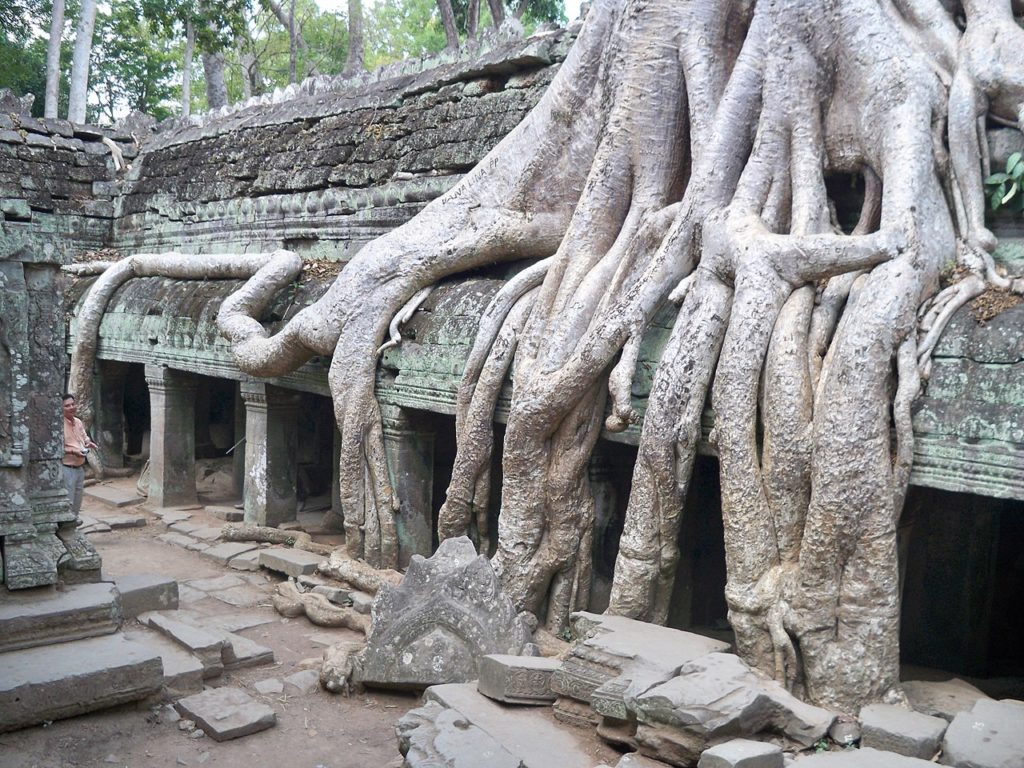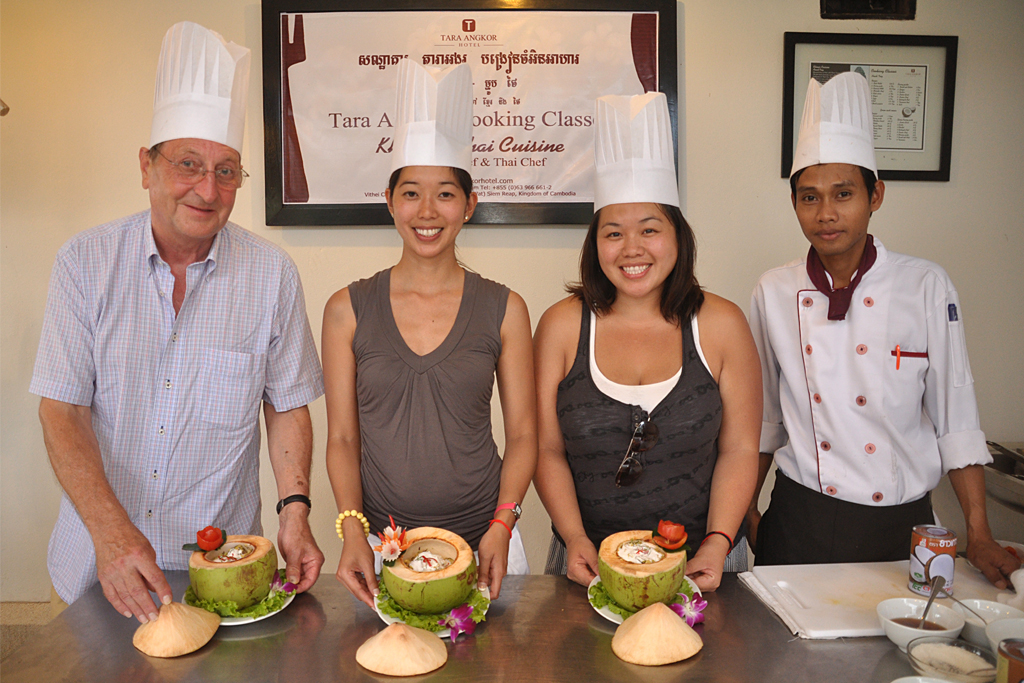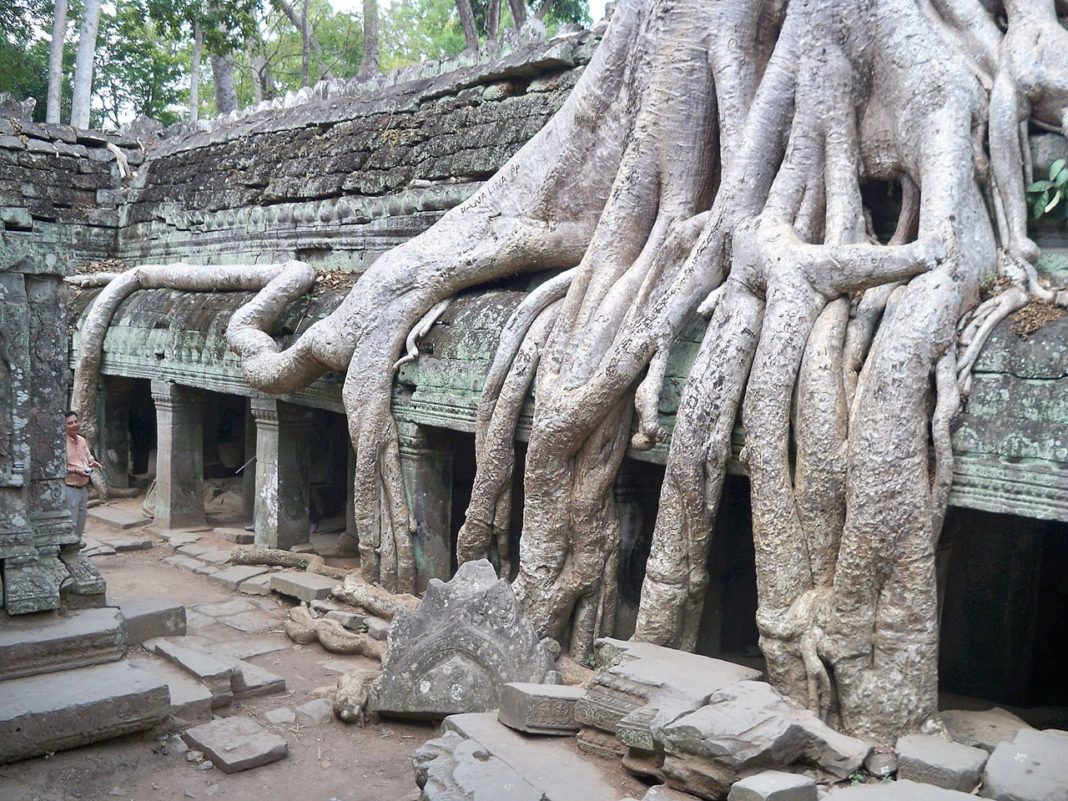It’s believed that the city was given its name by King Ang Chan after he repulsed an army led by Siamese king Maha Chakkraphat at this site in 1549.
But the world did not know about the ruins of Angkor, Siem Reap’s biggest draw, until it was rediscovered in the 19th century by French naturalist Henri Mouhot, who stumbled upon the archeological gem while exploring the tributaries of the Mekong.
Today, Siem Reap’s treasures are once again on display with a plethora of sights and experiences that every traveller can appreciate.
Marvel at the world’s largest religious monument
Spanning 400 square kilometres, the Angkor Archaeological Park is dotted with the remnants of majestic temples built by the Khmer Empire between the 9th and 15th centuries.
The park’s most famous attraction, Angkor Wat, occupies a 162-hectare site and is the world’s largest religious monument.
 Originally a temple dedicated to the Hindu god Vishnu, the structure was commissioned by King Suryavarman II shortly after ascending the throne in 1113, and designed to represent Mount Meru – the home of the gods in Hindu cosmology.
Originally a temple dedicated to the Hindu god Vishnu, the structure was commissioned by King Suryavarman II shortly after ascending the throne in 1113, and designed to represent Mount Meru – the home of the gods in Hindu cosmology.
The wide, rectangular moat surrounding the temple complex reflects the mythical ocean surrounding Earth and the temple’s towers symbolise Mount Meru’s peaks.
Angkor Wat is famed for its intricate bas-reliefs depicting beautiful apsara and Hindu legends like the churning of the ocean of milk, a story about the creation of the universe.
Explore the renowned temple trail
Just because you’ve seen one temple doesn’t mean you’ve seen them all. At Siem Reap, there’s no danger of temple fatigue as each has its own allure.
In Angkor Wat’s vicinity is Bayon, a 12th-century Buddhist temple carved with smiling stone faces that gaze serenely upon visitors.
 The towering faces are said to represent Avalokitesvara, the bodhisattva of compassion, but also bear a striking resemblance to King Jayavarman VII, who considered himself a devaraja or god-king.
The towering faces are said to represent Avalokitesvara, the bodhisattva of compassion, but also bear a striking resemblance to King Jayavarman VII, who considered himself a devaraja or god-king.
From Bayon, which is glorious at sunrise, head to nearby Ta Prohm, made famous by the 2001 action movie Lara Croft: Tomb Raider, starring Angelina Jolie.
Shrouded in jungle with its ramparts covered by the tentacle-like roots of fig, banyan and kapok trees, this 12th century Buddhist temple is ethereal.
Another temple worth the trip is Banteay Srei, located about 25 kilometres from the main group of Angkor shrines. Dedicated to the Hindu god Shiva, this small, pink sandstone temple is ornamented with floral motifs and mythological scenes from the Ramayana.
Catch gravity-defying performances
Featuring contortionists, acrobats, jugglers and musicians, Phare, The Cambodian Circus weaves historical, folk and modern tales and circus-style stunts in one entertaining show.
Just 2 kilometres from Pub Street, this big top performance runs for an hour and, unlike traditional circuses, does not involve animals.
 The talented performers hail from Phare Ponleu Selpak, a non-profit vocational training centre established by a group of former refugees in 1994 to give deprived and troubled youngsters a creative outlet and an opportunity to earn a living.
The talented performers hail from Phare Ponleu Selpak, a non-profit vocational training centre established by a group of former refugees in 1994 to give deprived and troubled youngsters a creative outlet and an opportunity to earn a living.
Trained for a minimum of eight years, the artists will have you at the edge of your seat with their skilled story-telling through dance, gravity-defying somersaults and expert fire twirling.
Cruise Southeast Asia’s largest freshwater lake
Located 15 kilometres south of Siem Reap, the massive Tonle Sap is the largest natural freshwater lake in Southeast Asia.
Measuring 100 kilometres at its widest point and some 250 kilometres long, this lake has a vibrant ecosystem that supports more than 140 species of fish and colonies of endangered water birds like the Bengal florican, sarus crane and white-shouldered ibis.
 Also interesting are the lake’s floating villages that consist of wooden houses built on stilts. The most popular is Chong Khneas, which while touristy, also houses the Gecko Environment Center where visitors can learn about the lake and its communities, as well as support locals by picking up a souvenir or two.
Also interesting are the lake’s floating villages that consist of wooden houses built on stilts. The most popular is Chong Khneas, which while touristy, also houses the Gecko Environment Center where visitors can learn about the lake and its communities, as well as support locals by picking up a souvenir or two.
Many tour operators offer half-day tours to the floating villages and other nearby attractions, but you can also choose a full-day trip to farther flung villages like Kampong Phluk, where houses are built on stilts up to 10 metres high amid a mangrove forest.
Take a Khmer cooking class
Khmer cuisine is more than just amok. If you really want to sink your teeth into the basics of Khmer cooking, the best place to start is in the kitchen of a local gourmand.
Khmer Gourmet Cooking Class runs 2.5-hour long sessions that begin with an introductory tour of Khmer ingredients at the nearby Psar Chaa or Old Market.
 Once back in the kitchen, friendly instructors will guide you as you put together a selection of authentic dishes like nhaom svey kchei (green mango salad) and kari chas mao’n (chicken and potatoes in a coconut milk-infused curry).
Once back in the kitchen, friendly instructors will guide you as you put together a selection of authentic dishes like nhaom svey kchei (green mango salad) and kari chas mao’n (chicken and potatoes in a coconut milk-infused curry).
Also worth a try is Paper Tiger Eatery, a Pub Street restaurant that offers great food and ambience, as well as immersive cooking lessons.
According to airasia.com














